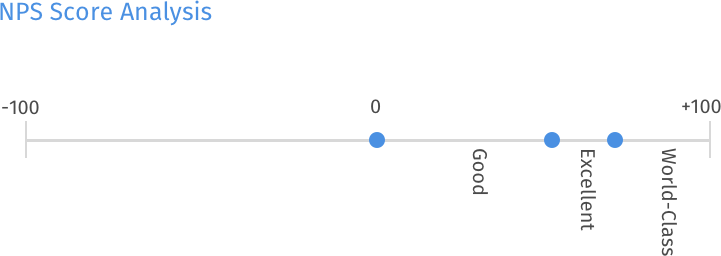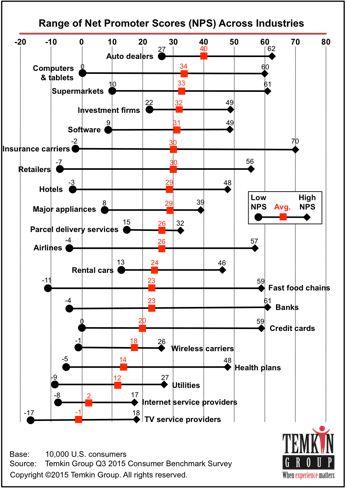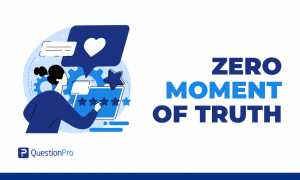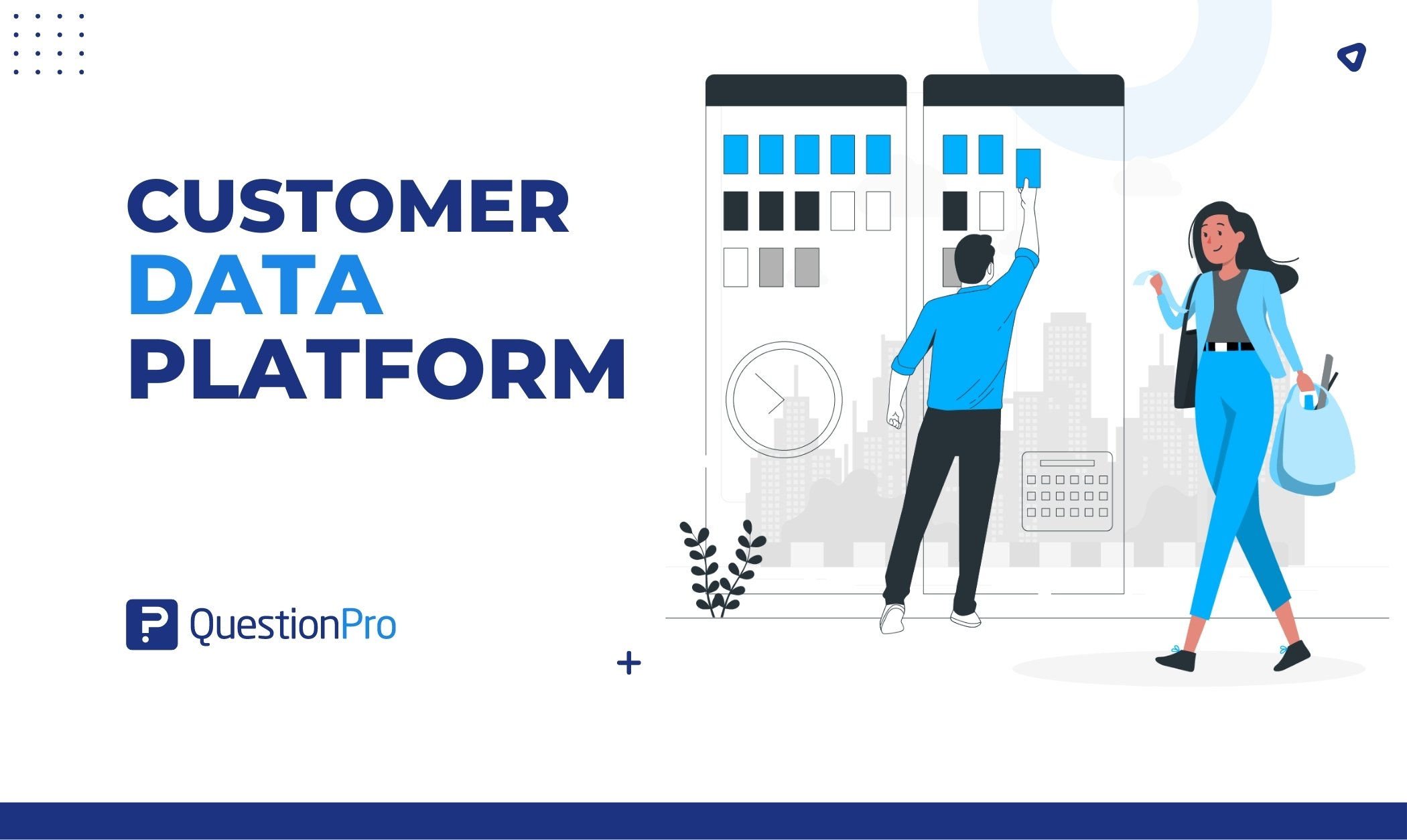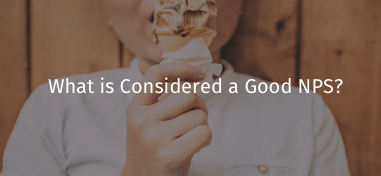
What is a good Net Promoter Score (NPS)?
A net promoter score can tell you a lot about your business strategies, especially how successful you’ve been at building loyalty and enthusiasm among customers, clients, or employees. As you think about setting business goals, you’ve got to ask, What is a good net promoter score (NPS)?
The short answer is that a good NPS indicates your company or brand has more loyal customers/promoters than discouraged customers/detractors. We’ll cover NPS score ranges that are universally considered strong, neutral, and poor, as well as how to determine whether you’re doing well for your industry. But before we dig in, let’s discuss what an NPS score is and how to find your magic number.
The truth is that on its own, the NPS number is meaningless. However, an NPS rating offers various ways to measure your company’s performance and to compare it in a competitive landscape. An NPS score is one of the most effective customer experience metrics strategists can use to understand customer loyalty and satisfaction. When you pair an NPS rating with a Customer Effort Score, you have a dynamic duo.
The Net Promoter Score (NPS) scale
A net promoter score (NPS) measures the loyalty that exists between your company and your customers. By now, you probably already know that NPS can be as low as -100 or as high as +100. Customers or employees who give your company a positive NPS rating are promoters because they are most likely to share positive reviews or recommend you to people in their social circle. Respondents who give you a negative NPS score are considered detractors because they are more likely to end their engagement and discourage potential newcomers from engaging with your company.
To calculate your NPS score, start with the percent of respondents you consider promoters and subtract the percentage of responders you consider detractors. Next, multiply that number by 100. The resulting number is your NPS. When you’ve taken the time to craft a solid NPS survey, finding that number is even easier.
Any positive NPS rating means that you have more advocates (promoters) willing to recommend you than critics (detractors). A score of -100 means that every one of your customers is a detractor. On the other end of the spectrum, +100 means that everybody is a promoter. Good NPS score ranges depend on a few factors.
Next, let’s cover the various ways you can determine whether your NPS is strong or in need of improvements.
So, what is considered a good NPS?
There are a few ways that you can measure your NPS and gain an understanding of what your NPS goal should be. These include general NPS benchmarks, the competitive landscape in your industry, comparisons of those two factors, and finally, continued self-assessment.
General NPS benchmark
Given the NPS range of -100 to +100, a positive score or NPS above 0 is considered “good,” +50 is considered “excellent,” and above 70 is considered “world-class.” Based on global NPS standards, any score above 0 is “good.” This means the majority of your customer base is more loyal. Keep these global benchmarks in mind as you assess your results. Note that we are discussing customers, but the same NPS score ranges apply to employee NPS (eNPS):
- Generally, if your net promoter score (NPS) is below 0, that is an indicator that your company needs to start understanding and improving your customer satisfaction levels.
- If your NPS is above 50, you are doing great! Your company places customer satisfaction high in priority and has a lot more satisfied customers than dissatisfied ones.
- An NPS rating of 70 or more places you in the list of top customer-centric companies. This likely means that your customers love you and your company generates a lot of positive word-of-mouth referrals.
The stronger your NPS score is, the more organic growth your company will experience. This is because your customer referrals will convert into new leads and more revenue for your company. But as you’ll see in the next section, these conversion rates depend on your competitive landscape.
According to a research study conducted by Forrester in March 2020, the companies had an NPS in range of -35 to 59 and reflect the consumer sentiment before and after COVID-19. National Park Service, USAA, Trader Joe’s, and Navy Federal top the ranking in their respective industries. They have an average NPS score in high 50s and prove that organizations that invest in customer centricity have high customer loyalty. Navy Federal and Apple Card were the new entrants among credit card providers, while Tesla got far ahead of its corresponding CX Index score in the mass market manufacturing category.
- Digital retailers, multichannel retailers and luxury automakers have industry averages in the low to mid 30s.
- Mass-market automakers, auto and home insurers, hotels, credit card issuers, and direct banks have an average NPS score in the 20s.
- Multichannel banks, airlines, and investment firms have average industry scores in the 10–20 range.
- Health insurers and utilities manage to score a positive NPS.
- The federal government scored below zero with the widest spread of results.
Using competitive landscape as your NPS benchmark
For more industry-specific strategies, you need to assess the competitive landscape and compare your NPS rating to those of your competitors. This provides a better benchmark for measuring your NPS success.
Consider this report based on TV and Internet service providers. You can see that the CX leaders in this space make almost 8x as much revenue as those that lag.
This is a better method to measure your NPS because this accounts for variations in your industry. Airlines, for example, bring more happiness to customers than banks. Thus they tend to have a higher NPS. Because of that nature, it would not be helpful to compare your bank survey results to an airline, or any other industries.
Below is the range of net promoter scores across several industries:
As you can see, there are excellent, good, and poor NPS ranges for each industry along with an average NPS.
The airline industry has a typical NPS range between -4 and +57. United Airlines has an NPS of 10 – one of the lowest-scoring companies in the airline industry. On the other hand, Verizon has an NPS of 7, which is considered one of the best in the mobile service industry.
In industries where the market is more dynamic and customers have more freedom to switch to competitors, net promoter scores have become a critical benchmark for measuring growth.
Create NPS survey: Get your free account now
NPS global standards vs. Competitor benchmarking
You can compare your NPS across global standards, but it is critical to note that NPS scores will vary across geographic markets. If you have ever compared NPS in the US and Europe, you probably know the cultural and demographic differences when rating a company’s performance.
For example, European customers are more conservative with rating a company’s performance, making them less likely to rate you a 9 or 10. In other regions, you may find customers using the lower end and higher end of the scale, but skipping in between. Because of these differences, even the absolute NPS ratings in the same industry can vary dramatically. This is another reason why a good NPS is subjective.
Compare your NPS against your own
Since NPS is just a number if you don’t know how to interpret it in context, it is impossible to give you a single number representing a good net promoter score, especially when you are getting started. Whether you’re new to the industry or hoping to improve some long-term trends, the best NPS number is the one that’s better than your scores in the past – you are your most important benchmark.
The best way to start measuring progress would be to compare your NPS score against your results from over the last quarter or six months. If you are noticing an increase of at least 10 percent, you are heading in the right direction and progressing toward a successful business driven by organic growth. On the other hand, if you notice a significant decrease in NPS ratings, there is room for improvement and you need to identify the cause and take appropriate measures to instill more confidence and loyalty in your customers.
How to effectively utilize NPS
NPS helps you get insights into how your customers perceive your brand. You can measure your NPS against an industry benchmark, to begin with. You can also build and send an NPS survey to your customers to get results and establish a baseline for further improvement. Make sure to continuously collect data; more responses will give you more data points and a better understanding of customer experience (CX).
- We have mentioned below 3 key ways to begin using NPS today:
Help your support team understand your customers, their queries, and resolve by mapping NPS into customer profiles. - Filter your reports by NPS rating in order to better know customer segments.
- Perform a spending analysis to understand your high-value promoters.
Brands must remember this. Analyzing your data with NPS is important, but what is more important is having a closed-loop customer feedback system. This will enable your customer-facing employees to act on real-time feedback from customers. An efficient closed-loop system should have all the tools necessary to follow-up on dissatisfied customers and ‘close the loop’ taking necessary actions.
NPS+ will help you identify the root causes behind the customer feedback. Once the customers answer NPS question, they will be presented an open-ended question to submit their comments. You can also configure NPS+ question type with pre-filled options in the survey. For instance, if a customer gave a score of 7 out of 10, you can learn the reasons behind why customer gave you that specific score. It allows you to find out areas of improvement and offer better product and services.
Conclusion
Instead of asking, “What is a good net promoter score?” and hoping to find a magic number, focus on understanding the drivers of NPS and how to improve long-term customer satisfaction and engagement. Remember, a good net promoter score by itself is not a quantifiable metric to help you grow. Instead, your main goal should always be to listen, analyze, and act on your customer feedback. Taking the right action will ensure you convert your detractors to promoters.
What do you consider as a good net promoter score for your company? Connect with us on how we can help you offer a great customer experience to your users and achieve a good NPS score.
Measure your NPS with a quick Survey: Get Your Free Account Now




